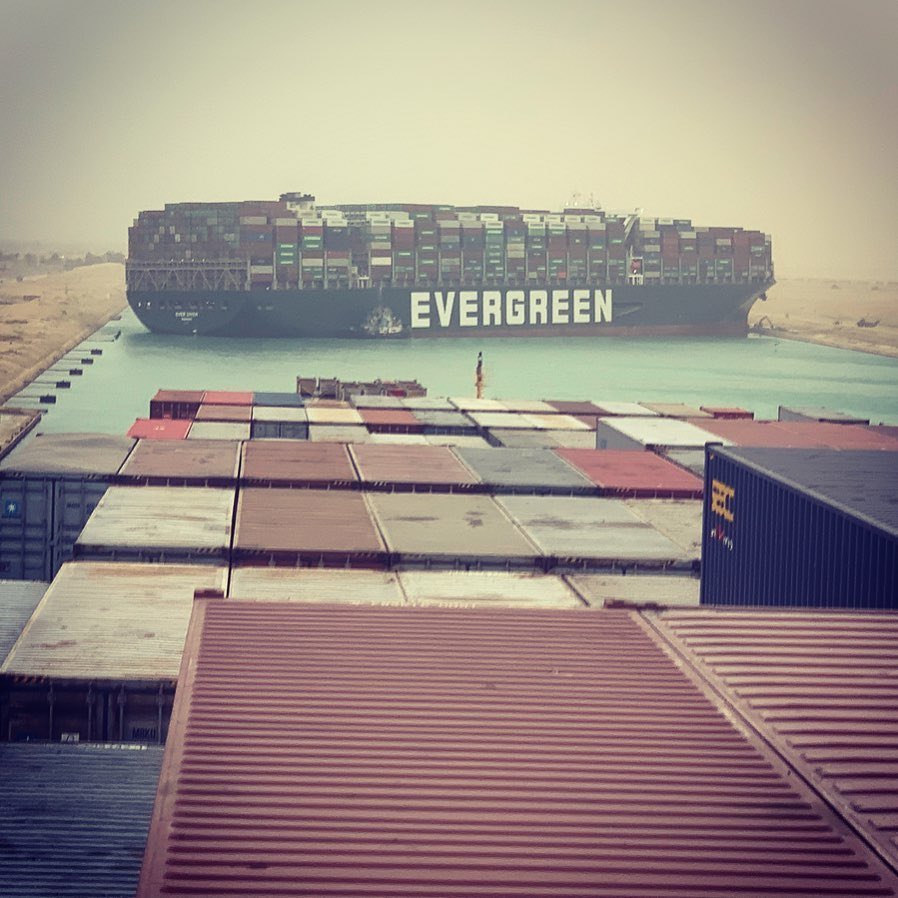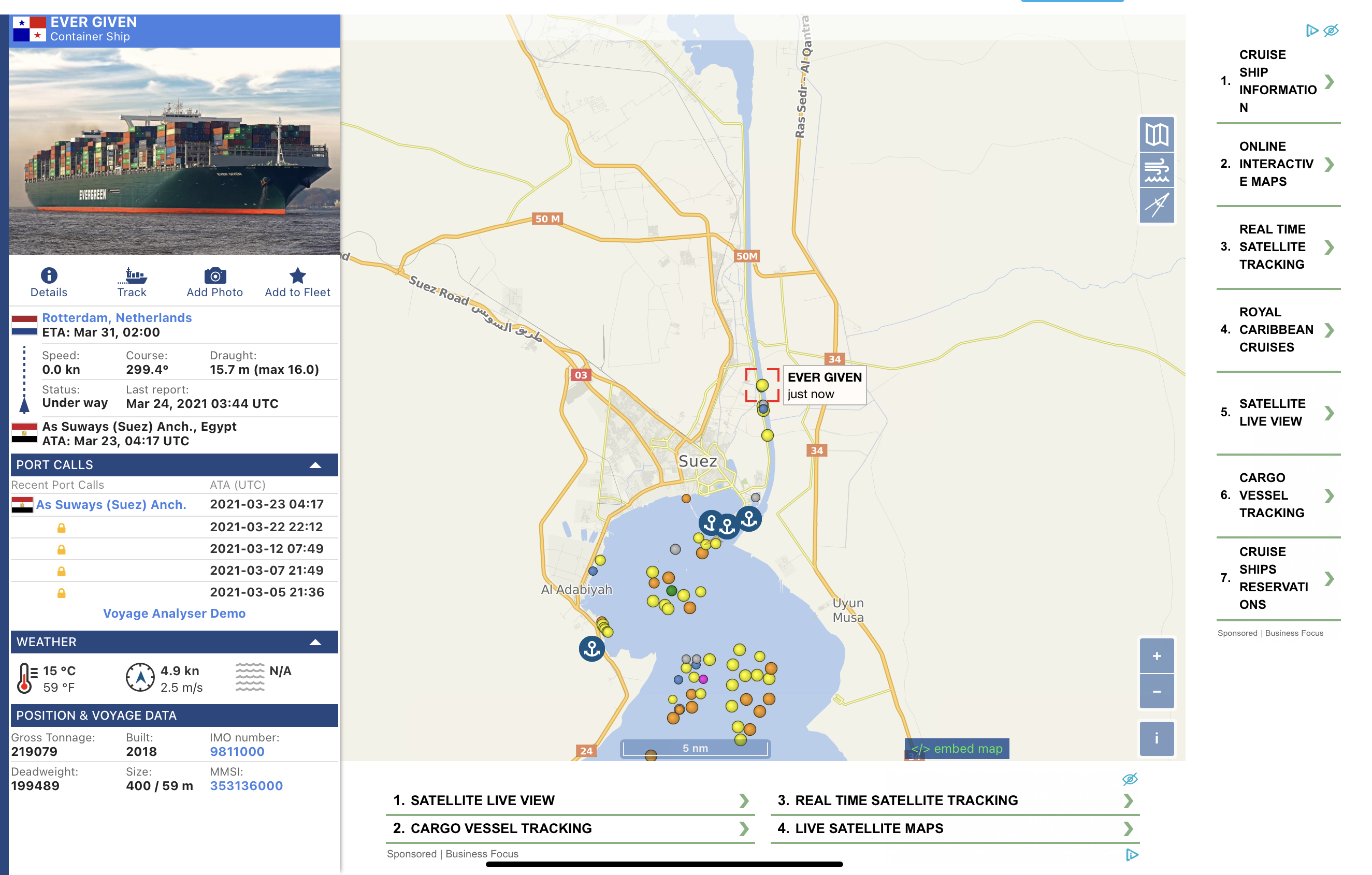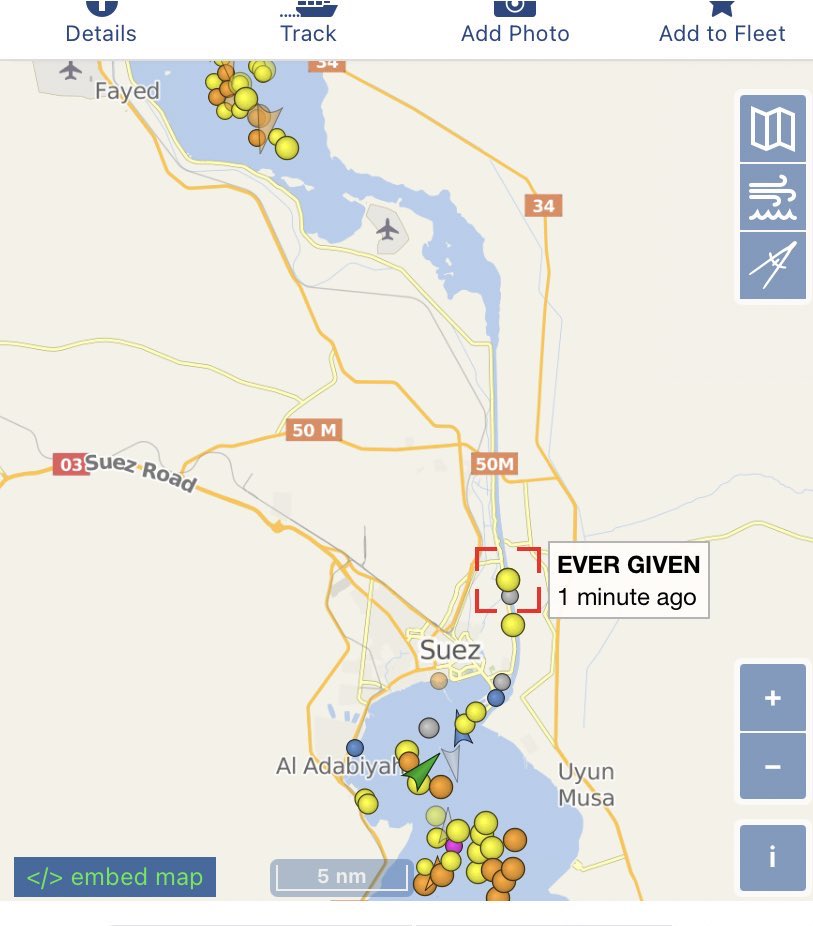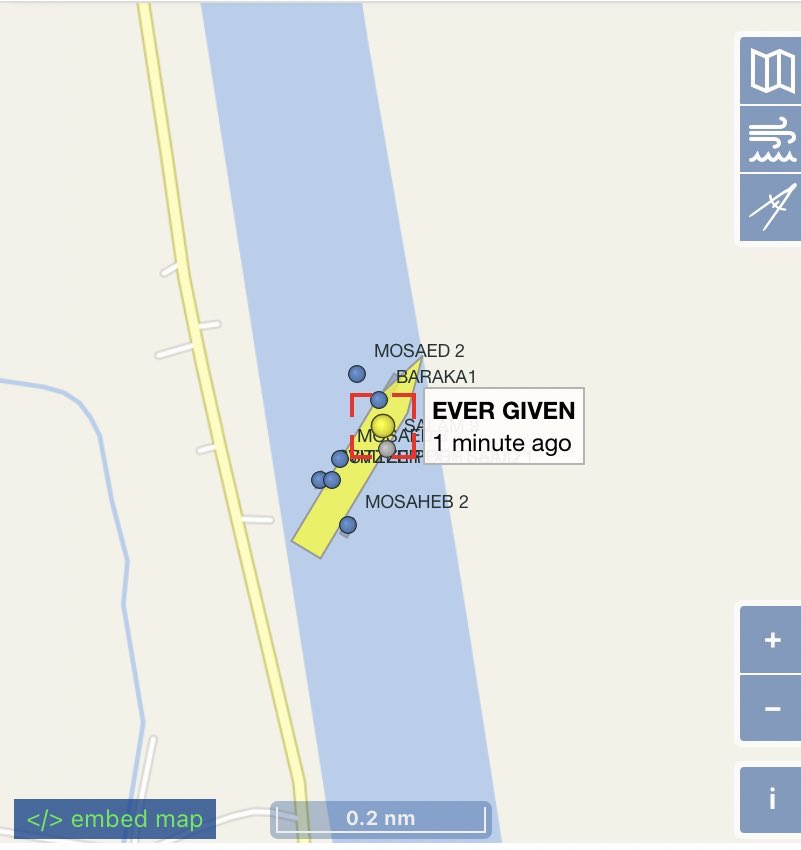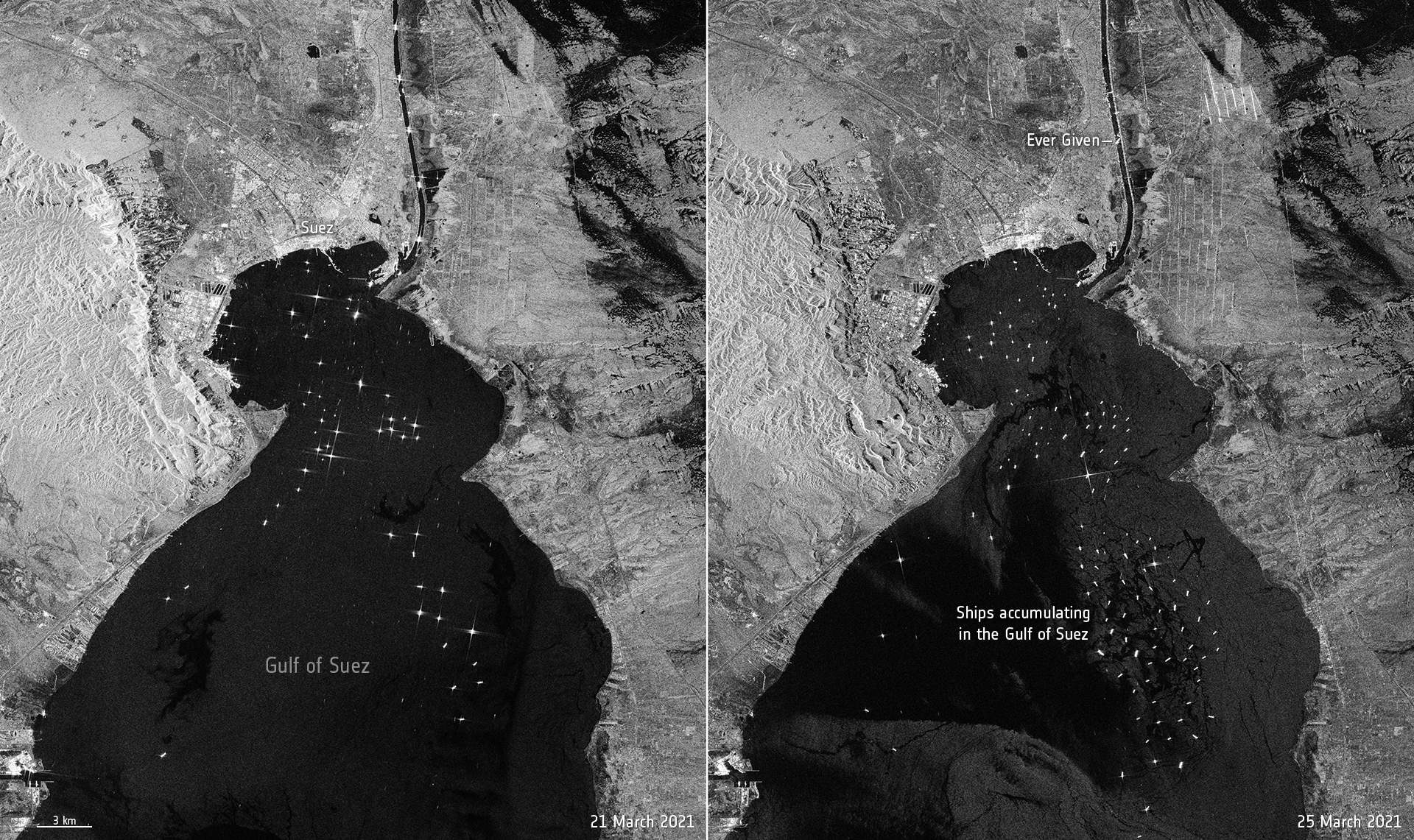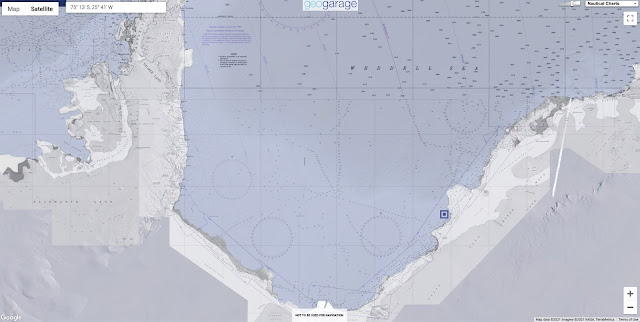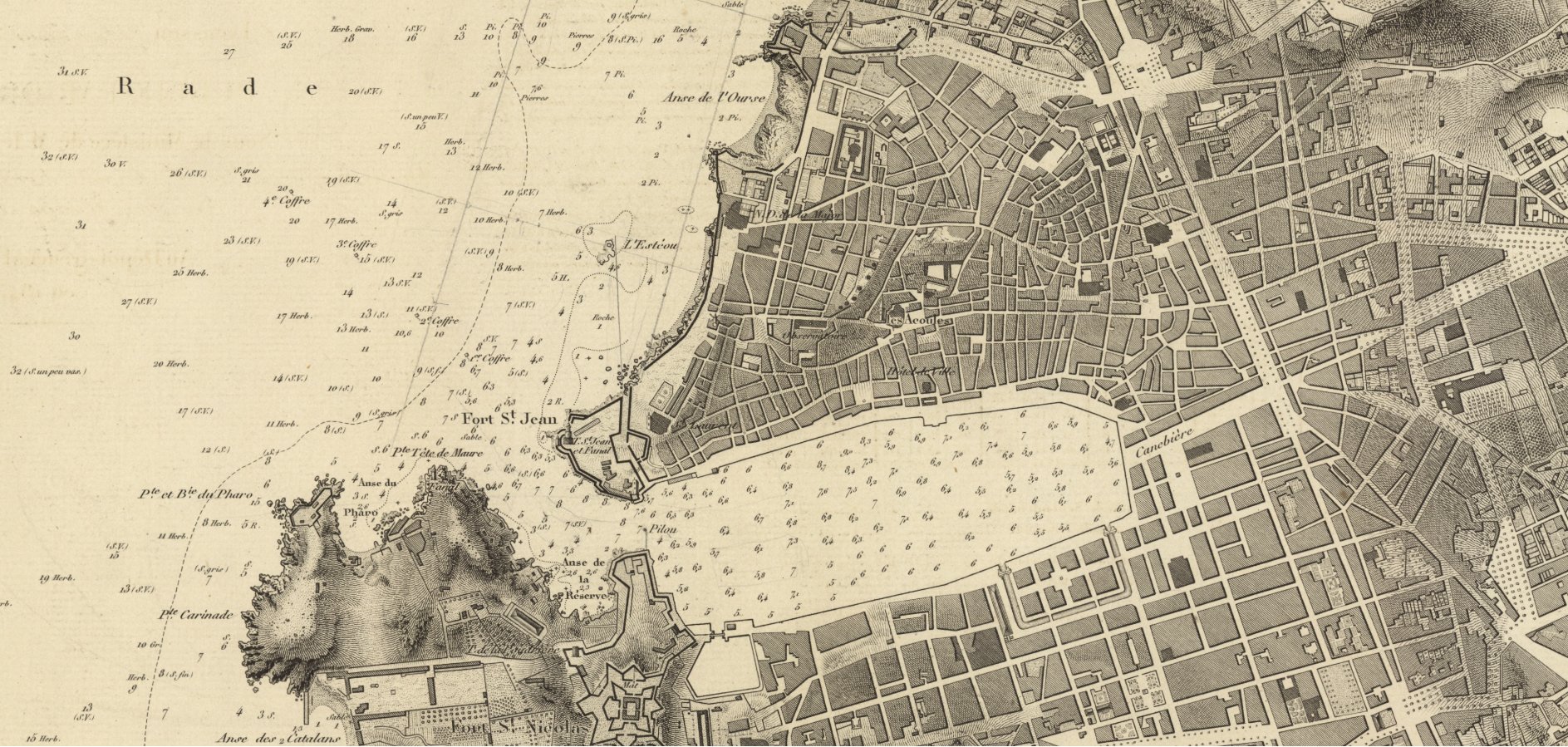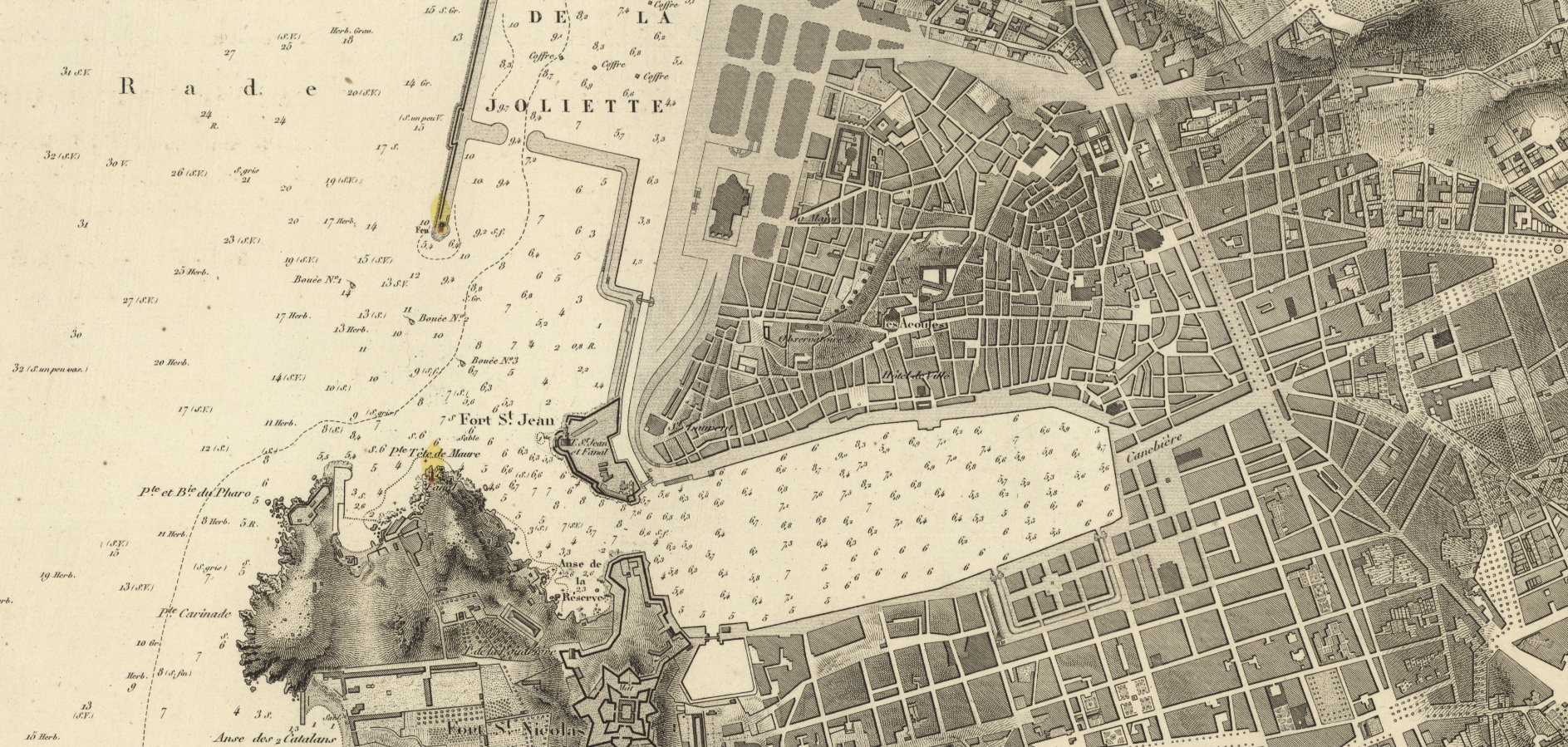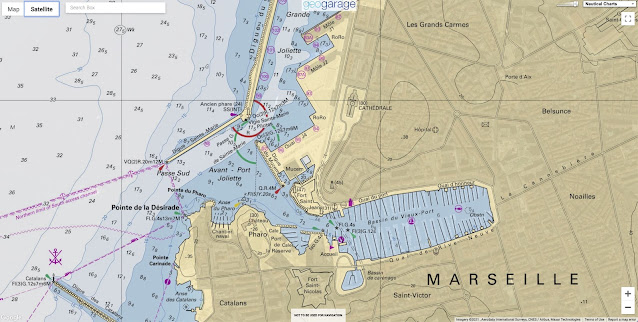Saturday, March 27, 2021
Living off the grid on a homemade island
Friday, March 26, 2021
Magnets, vacuums and plant-based nets: the new fight to clean plastic from our seas
From The Guardian by Adrienne Matei
Tiny plastics are turning up in the air, our drinking water and our placentas. Here’s how innovators are handling the crisis
When it comes to microplastics, there’s rarely good news.
Microplastics have been found in rain, Arctic ice cores, inside the fish we eat, as well as in fruit and vegetables.
All plastic waste, regardless of size, is detrimental to the environment, but microplastics pose a special challenge given their minuscule size (some are 150 times smaller than a human hair) and ability to enter the food chain.
“I think we know enough today to worry about it,” says Dr Douglas Rader, chief oceans scientist at the Environmental Defense Fund, pointing out that many microplastics contain chemicals linked to reproductive and hormonal disruption and cancer.
But it’s not all bad news.
A microplastics magnet
 Fionn Ferreira, a 20-year-old Irish inventor, found a way to successfully remove 88% of microplastics from water samples. Photograph: Fionn Ferreria
Fionn Ferreira, a 20-year-old Irish inventor, found a way to successfully remove 88% of microplastics from water samples. Photograph: Fionn FerreriaOne way to remove microplastics from water is to encourage them to clump together into compounds that can be filtered – or, in the context of the 20-year-old Irish inventor Fionn Ferreira’s work, magnetized – out.
Ferreira created a homemade ferrofluid – a magnetic mixture of oil and powdered rust – and successfully used it to remove 88% of microplastics from water samples.
In the future, he plans to test out whether he could use the device to make a self-cleaning filter for ocean engines.
Using bottom feeders as ‘living vacuum cleaners’
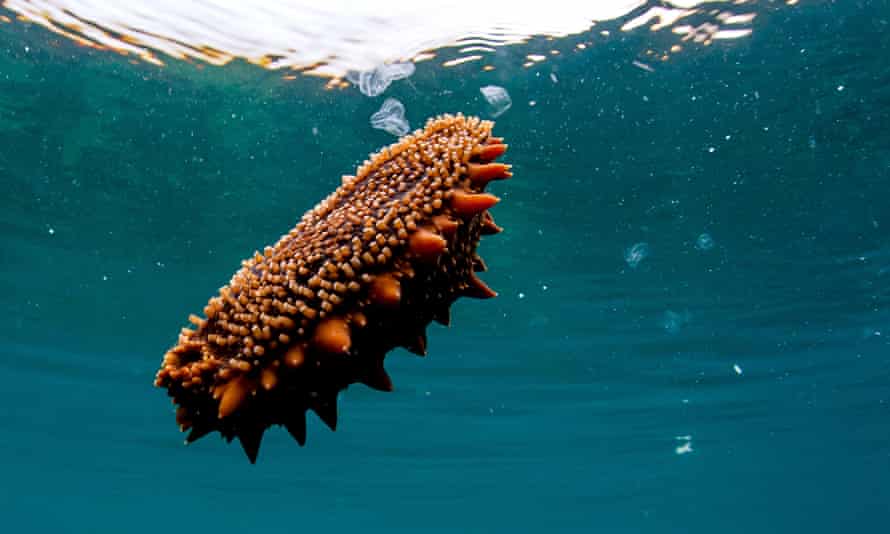
Dr Juan José Alava, an expert in marine eco-toxicology and conservation, believes the answer to the microplastics problem could already be in the environment.
“The idea is to identify communities of bacteria and try to enhance them – not by incorporating a new mix of genes created by humans, but by stimulating them to break down plastic,” he says.
A screen that can catch ‘plastic dust’
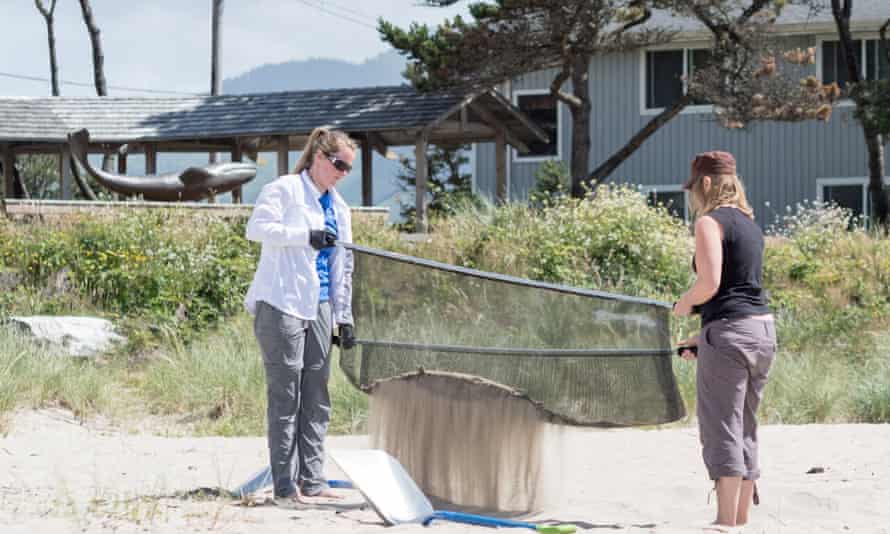 Marc Ward’s static-charged screen can capture plastic particles as small as 50 microns.
Marc Ward’s static-charged screen can capture plastic particles as small as 50 microns.Marc Ward first became concerned about microplastics over 15 years ago while studying threats to wild marine turtle populations in Costa Rica.
Ward began surveying beaches in both South America and near his home of coastal Oregon, sifting through sand with a static-charged screen able to capture plastic particles as small as 50 microns – essentially plastic dust.
Now, Ward works with a team to filter thousands of pounds of plastic out of Oregon’s beaches every year as part of his non-profit, Sea Turtles Forever’s Blue Wave initiative.
It may be that filter-cleaning sand at the beach is akin to chipping away at a mountain, and that ocean currents can undo such work in one fell swoop, yet Ward retains a positive outlook.
Plant-based nets than can collect even the tiniest particles
 Scientists have created a new kind of water filter made from plant-derived nanocellulose mesh. Photograph: VTT Technical Research Centre of Finland
Scientists have created a new kind of water filter made from plant-derived nanocellulose mesh. Photograph: VTT Technical Research Centre of FinlandA new kind of water filter made from plant-derived nanocellulose mesh has been created by scientists at the VTT Technical Research Centre of Finland.
Nanoplastics – as tiny as 0.1 micrometers in diameter – have long proven particularly difficult to remove from drinking and wastewater given their minute size, and they have been found to accumulate in the tissues of humans and other organisms.
Hopefully, they have finally met their match.
The gist (which this short video on the technology captures) is that cellulose filters can help researchers study nanoplastics, as well as keep them out of our water when integrated into wastewater filtration systems, or even laundry machines, where they could catch the tiny microfibers from synthetic clothing that comprise a subset of microplastics.
- GeoGarage blog : The Atlantic is awash with far more plastic ... / Planet or plastics : what happens to the .../ Drowning in plastic / Island reveals rising tide of plastic waste / The Arctic Ocean is teeming wth microfibers / That fresh sea breeze you breathe may be ... / Satellites and AI team up to spot tiny ocean ... / Why these tiny ocean creatures are eating plastic / "A Plastic Tide" film depicts shocking plastic ... / A sea change: how one small island ... / The pristine Arctic has become a garbage ... / Microplastic pollution in oceans is far worse ...
Thursday, March 25, 2021
Suez canal blocked by huge container ship after 'gust of wind'
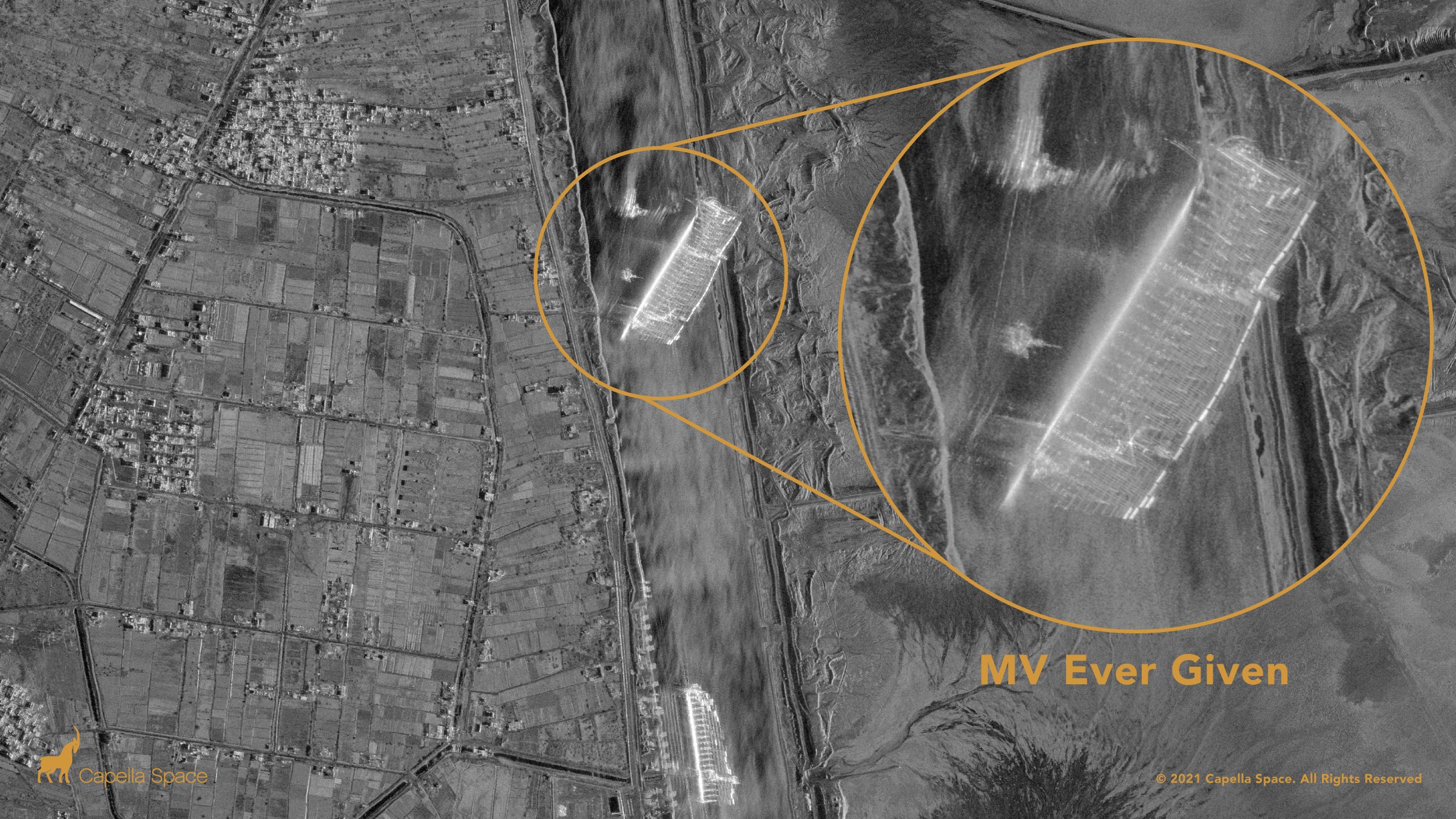 Capella’s #SAR constellation captures the Ever Given container ship blocking the Suez Canal with very high resolution 50 cm imagery as of 9:36am local Egyptian time.
Capella’s #SAR constellation captures the Ever Given container ship blocking the Suez Canal with very high resolution 50 cm imagery as of 9:36am local Egyptian time.From The Guardian by Martin Farrer and Michaél Safi
Eight tugboats were working to free the vessel, blocking a lane through which about 50 ships a day passed in 2019, according to Egyptian government statistics.
Bernhard Schulte Shipmanagement (BSM), the ship’s technical manager, said it ran aground in the canal at about 05.40 GMT on Tuesday.
Early reports speculated the vessel suffered a loss of power, but the ship’s operator, Evergreen Marine Corp, told Agence France-Presse it ran aground after being hit by a gust of wind.
 A part of the Taiwan-owned MV Ever Given (Evergreen), lodged sideways and impeding all traffic across the waterway of Egypt’s Suez canal.
A part of the Taiwan-owned MV Ever Given (Evergreen), lodged sideways and impeding all traffic across the waterway of Egypt’s Suez canal.Egyptian forecasters said high winds and a sandstorm hit the area on Tuesday, with winds gusting as much as 31 mph.
BSM said all crew were safe and accounted for, and there had been no reports of injuries or pollution.
A growing number of tankers were gathering near the entrance to the canal on Wednesday morning waiting to pass through. An extended blockage would have severe consequences for trade.
As of Wednesday, five laden liquefied natural gas (LNG) tankers were unable to pass through the canal due to the grounded container ship, according to the data intelligence firm Kpler.
Pictures taken from another ship in the canal, the Maersk Denver, show the Ever Given lodged at an angle across the waterway.
Julianne Cona, who posted the picture from the Maersk Denver on Instagram, watched the drama unfold as her ship waited at anchor.
“Hopefully it won’t be too long but from the looks of it that ship is super stuck,” she wrote.
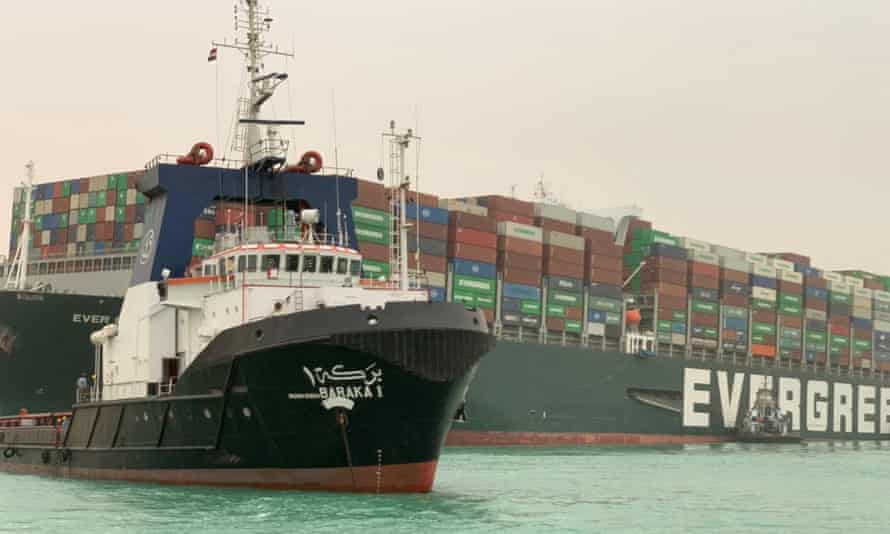 Photograph: Suez CANAL/AFP/Getty Images
Photograph: Suez CANAL/AFP/Getty ImagesThe shipping monitoring site Vesselfinder.com showed the stricken ship surrounded by smaller tugs trying to free it from the banks.
Normally ships form convoys to traverse the Suez north and south up and down the canal.
The Suez canal is one of the most important waterways in the world and links the Mediterranean with the Red Sea and shipping lanes to Asia. It is 120 miles (190km) long, 24 metres (79ft) deep and 205 metres wide and can handle dozens of giant container ships a day.
 Gen Ossama Rabei, head of the Suez Canal Authority, second right, speaks to other staff onboard a boat near the stuck cargo ship.
Gen Ossama Rabei, head of the Suez Canal Authority, second right, speaks to other staff onboard a boat near the stuck cargo ship.But Flavio Macau, a senior lecturer in supply chain management at Edith Cowan University in Western Australia, said one problem was that container ships had become much bigger in recent years.
He added: “Moving about 50 ships a day, the impacts of a stranded ship are negligible unless it takes weeks to float it. But that is very unlikely and it should be over in a couple of days, tops.”
The canal’s role as a cornerstone of international trade, particularly in oil, led the Egyptian president, Abdel Fatah al-Sisi, to announce an expansion of the vital waterway in 2014, a project promised as “a gift to the world”.
It cost $8bn (£5.2bn at that time), after the Egyptian dictator demanded the project be completed within a year, promising Egyptian citizens that it would prove to be an “artery of prosperity”.
Egypt’s Suez Canal Authority pledged that the expansion would double revenues from increased traffic, declaring that the canal would afford Egypt $13.23bn annually by 2023.
- The Guardian : Giant ship blocking Suez canal partially refloated
- CNN : Suez Canal blocked by traffic jam after massive container ship runs aground
- Bloomberg : Suez Canal Snarled by Giant Ship Choking Key Trade Route / How to Dislodge a 200,000-Ton Ship From a Canal Wall
- BBC : Egypt's Suez Canal blocked by huge container ship
- Vice : A Cargo Ship Drew a Giant Dick Pic in the Ocean Then Got Stuck in the Suez Canal
- GeoGarage blog : Suez canal transit in 30 seconds
Wednesday, March 24, 2021
NOAA launches major upgrade to flagship ‘American’ weather prediction model
 American model forecast on Christmas Eve, showing snow and mixed precipitation in the Washington region and to the north after an earlier period of rain as an Arctic front passes. (Pivotal Weather)
American model forecast on Christmas Eve, showing snow and mixed precipitation in the Washington region and to the north after an earlier period of rain as an Arctic front passes. (Pivotal Weather).@NOAA’s flagship weather model is undergoing a major #upgrade today to improve weather forecasts for hurricanes, snowfall, and heavy rain. (1 of 2) pic.twitter.com/SjLfxV3rz8
— National Weather Service (@NWS) March 22, 2021
NOAA says it will lead to better predictions of hurricanes and other extreme events, ocean waves and weather systems high in the atmosphere.
The upgrade focuses on addressing the underlying physics of the model and how it handles various features of the atmosphere.
It’s known as version 16.0 of the model frequently referred to by forecasters as simply the GFS or the “American” model.
The upgrade piggybacks off the launch of the GFS FV3 model, or Finite-Volume Cubed-Sphere Dynamical Core, a souped-up version of the previous GFS model that debuted in summer of 2019.
Its release was delayed while model biases were addressed, including a tendency for model depictions to skew too cold and snowy.
After changes, the FV3 was released, fully replacing the legacy GFS model in September.
The latest upgrade focuses on addressing some additional biases.
The upgrade also adjusts how initial conditions, or current weather information, are ingested into and processed by the model, while integrating more sources of data from weather satellites and ordinary aircraft.
Furthermore, the model’s resolution in the vertical will nearly double.
The atmosphere will now be simulated as having 127 vertical slices, rather than just 64.
“When we announced our upgrade to the GFS in 2019, we described it as replacing the engine of a car,” Louis Uccellini, director of NOAA’s National Weather Service, said in a phone conference Monday.
“With today’s upgrade, we’re adding more horsepower and more upgrades to the entire car as we move forward.”
(WeatherBell)
“This implementation is the first time it allowed us to couple the GFS to the global wave model,” said Vijay Tallapragada, chief of the Modeling and Data Assimilation Branch at NOAA’s Environmental Modeling Center.
Tallapragada explained that the highest altitude simulated by the new GFS will jump to 80 kilometers (50 miles) up from 55 kilometers (34 miles), effectively raising the ceiling of the model.
The additional layers added to the model will allow for improvement in two key areas — the near-surface “boundary layer,” and the stratosphere, the second layer of earth’s atmosphere.
Most weather occurs in the troposphere, or the part of the atmosphere in contact with the ground.
In the stratosphere, temperature increases with height due to the absorption of ultraviolet solar radiation.
Increased resolution in the stratosphere will allow for better prediction of sudden stratospheric warming events, which are known to have major implications on weather systems closer to the surface.
In early January, a sudden stratospheric warming event spurred the disruption of the polar vortex, which, through a chain reaction of events, unleashed an outbreak of bitter Arctic air that wrought havoc in Texas in mid-February.
(WeatherBell)
When it comes to tropical storms and hurricanes, they say the results are promising.
“We have been running the GFS v16 maps in parallel on our models page for the past few months, and I’ve honestly not seen much to impress me,” wrote Matt Rogers, a meteorologist at Commodity Weather Group.
- WP : The Weather Service prepared to launch prediction model that many forecasters didn't trust / Weather Service said its upgraded American forecasting model is about ready for prime time
- Meteorological Tech : NOAA to upgrade Global Forecast System to boost forecasting capabilities
- Maritime Executive : Climate Change and Shipping
- Observer : America Has Gotten Bad at Predicting Weather—But There’s a Plan to Fix It
- LuckGrib : GFS HR Ocean Wind / GFS v16 and the WW3 Ocean model
- GeoGarage blog : NOAA upgrades the U.S. global weather ... / The Weather Service prepares to launch prediction .. / The new American weather model shone during ... / NOAA to develop new global weather model / How forecast models can lead to bad forecasts / Comparing forecast models for Irma
Tuesday, March 23, 2021
Antarctic seafloor exposed after 50 years of ice cover
The sediment samples gathered are expected to provide more detailed insights into the ecosystem, while a geochemical analysis of the water samples collected will allow conclusions to be drawn regarding the nutrient content and ocean currents.
Experts from the Alfred Wegener Institute, Helmholtz Centre for Polar and Marine Research (AWI) and their international partners arrived on scene shortly after the calving event.
The scientists on board are thrilled with the once-in-a-lifetime photographs and sediment samples from the seafloor, not to mention the geochemical measurements of the water column above it.
Gale-force winds had initially kept the Polarstern from reaching the region, but on the weekend (13/14 March 2021), more favourable weather conditions led the captain to give a green light for making a circuit of the iceberg and exploring the surrounding area.
I am grateful to the crew of the Polarstern for taking on the associated hardships and also risks.
Polar research makes a decisive contribution to better understanding and foreseeing climate change and its consequences for our earth.
The effects of climate change in Antarctica, among others, are worrying.
" This on-site research is essential to understanding the processes that massive calving events set in motion.
Icebergs of this size only calve roughly once every 10 years in the Antarctic.
Their smaller counterparts break free more frequently: snow falls and is compressed into thick layers of ice, which slowly slide along the continent toward the sea.
In turn, such changes could produce fundamental transformations of the hydrography: to date, a stable front has kept comparatively warm water from reaching the ice shelf.
If there is less and thinner sea ice, and therefore less salt is released into the water column, that front could become unstable, and the warmer water it lets through could melt the shelf from below.
In addition, a warmer atmosphere could mean that icebergs calve more frequently.
The Antarctic is currently losing ice mass at a higher rate than before 2000, as the AWI experts have observed.
In this regard, the seafloor, ocean, ice and atmosphere are investigated – with different focus areas, depending on the respective expedition.
“It’s extremely fortunate that we were able to respond flexibly and explore the calving event at the Brunt Ice Shelf in such detail,” says Dr Hartmut Hellmer, a physical oceanographer at the AWI and head of the expedition.
The planned region lies in the southeast Weddell Sea, so it was already close by.
“That being said, I’m even happier that we successfully replaced a number of moorings, which will continue to record elementary data on temperature, salinity, and ocean current directions and speeds once we’ve left.
This data forms the basis for our simulations of how the ice sheet will respond to climate change.
As a result, we can say with a higher degree of certainty how quickly the sea level will rise in the future – and provide the political community and society at large with sound data for making decisions on necessary climate change adaptation measures,” Hellmer explains.
The deep-sea research team observed numerous organisms that had settled on stones of various sizes, surrounded by a silty landscape.
The stones hail from the Antarctic continent and are transported to the ocean by glaciers.
The majority of the organisms on them are filterers.
Whether they chiefly feed on algal remains, or on organic particles transported with the ice, remains unclear.
The experts also found a number of non-sessile species like sea cucumbers, sea stars, various molluscs, at least five fish species and two squid species.
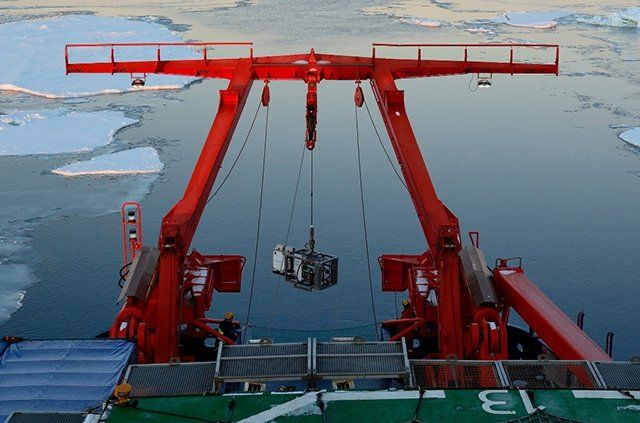
The deep-sea team photographed and filmed this surprisingly species-rich ecosystem for the first time using the OFOBS (Ocean Floor Observation and Bathymetry System).
Since the camera platform is towed below the ship on a long cable, the researchers had to wait for the calving event before they could explore the previously unreachable seafloor.
In the future, new technologies like autonomous underwater robots will be used to investigate such habitats.
Monday, March 22, 2021
Cubans are embarking on treacherous sea journeys as the economic crisis worsens
When Beatriz Jimenez closes her eyes, she sees her daughter and two young grandchildren and they are alive.
Jimenez's family left the small seaside town of Cabarién, on Cuba's north coast, on March 4, aboard a packed smuggler's boat.
The boat had come from Florida and picked up a group of Cubans desperate to reach the US, according to a statement from the Cuban foreign ministry.
The smuggling run violated both US and Cuban laws and put the passengers' lives at risk.
Although the communist-run island is only 90 nautical miles from the US, the weather in the Florida Straits is treacherous, particularly in the spring when "Easter winds," as Cubans call seasonal abrupt shifts in weather, can transform the sea into a frothing monster.
Jimenez said her daughter Lisbethy took the trip because she had been apart from her husband in Florida for more than a year, after the pandemic forced Cuba to cut most international flights.
Lisbethy had been afraid to leave her daughter Kenna Mariana, 6 years old, and Luis Nesto, 4, behind in Cuba and risk a lengthy separation.
"My daughter is a good mother. She wouldn't have done this if everything wasn't safe. She wouldn't have put them through this. Her children are everything to her," Jimenez told CNN from the small room full of toys that her daughter had shared with the children
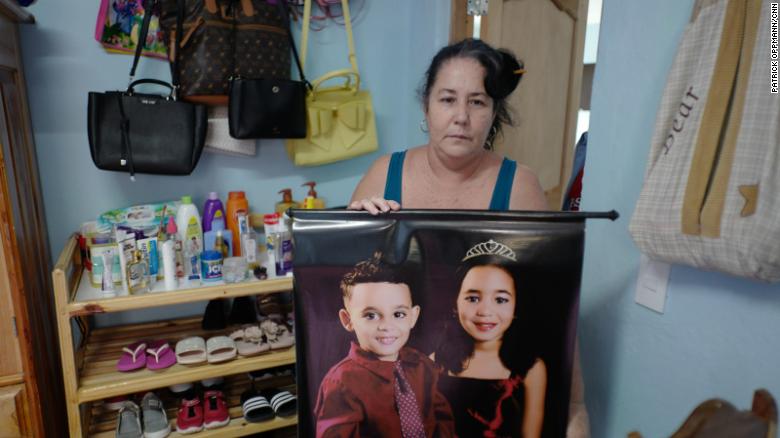
According to the Cuban foreign ministry statement, the smugglers made the migrants switch boats once they reached Bahamian waters, likely to try and confuse any Coast Guard ships that could be in pursuit.
As the second boat sped north, it lost control and capsized.
It is not clear how many people were aboard.
Some 14 hours later, a Royal Bahamian Defence ship found 12 survivors and one dead body, according to a Bahamian government statement.
Lisbethy and her children were not among them.
Jimenez said relatives in Florida, who had contacted survivors in the Bahamas, later told her the smugglers had not brought life vests for any of the passengers.
As Cuba's economic crisis worsens, US Coast Guard officials say they are seeing more Cubans attempting the dangerous journey by boat.
Since October 1, the Coast Guard has intercepted 90 Cubans at sea, according to spokesman Brandon Murray.
That number already surpasses the 49 Cuban migrants the previous fiscal year and does not account for many migrants who may arrive in third countries like the Bahamas or who successfully reach the US.
In February, a small boat carrying eight Cubans, including two pregnant women, capsized as it reached the Florida coast after 16 days at sea.
The same month, the US Coast guard rescued three Cubans who had been living mostly off coconuts after being stranded on a deserted island in the Bahamas for 33 days.
While so far the numbers of Cuban migrants taking to the seas are far less than the rafters crisis of the 1990's, when thousands of people attempted the dangerous crossing by boat, the increase is raising alarms.
"The Coast Guard does not recommend anyone taking to the seas in vessels that are not seaworthy.
The vessels are often overloaded, the seas are unpredictable and the risk of loss of life is too great," the US Coast Guard said in a statement provided to CNN.
Most Cubans caught entering the US now are returned to the island, after President Obama, in his final days in office in 2017, canceled the "Wet Foot, Dry Foot' policy that allowed those who reached the country to remain.
According to figures released by the Coast Guard.
5,396 Cubans were interdicted in the fiscal year of 2016.
That number dropped to 1,468 the next fiscal year, following Obama's policy change, and since then has stayed in the hundreds.
But a worsening economic climate could push more Cubans to make the desperate voyage, despite having lost their preferential status.
In 2020, the economy shrank by 11%, according to Cuban government figures, as the island's tourism industry was almost entirely shut down by the pandemic.
That followed a series of punishing sanctions by the Trump administration -- the toughest in decades -- that included returning Cuba to the list of countries that support terrorism, limiting US citizens' ability to travel to the island and cutting off channels for Cuban-Americans to send remittances to relatives there.
"Remittances basically determine who can eat and who can't," said Ernesto Gonzalez, whose remittances company Vacuba was impacted by the Trump sanctions.
Gonzalez said he is urging the Biden administration to restore the money transfer services before Cubans face a humanitarian crisis.
Desperate circumstances
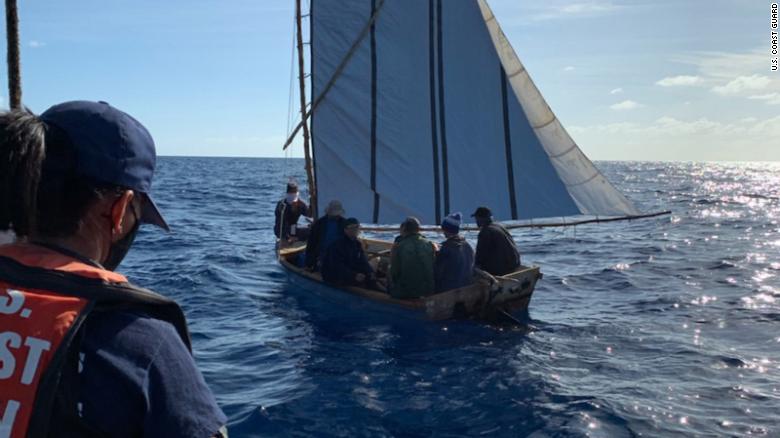
The migrants were repatriated to Cuba.
Increasingly Cubans wait in hours-long lines to buy food, which they must pay for in US dollars at many Cuban government-run stores.
Without tourists, restaurants and home rentals opened by Cuban entrepreneurs sit empty.
Many Cubans compare the ongoing crisis to the dark years the island experienced following the collapse of their ally the Soviet Union in 1991, when tens of thousands of Cubans fled to the US by boat and raft.
The Biden administration has said it is studying potential changes to its Cuba policy, including determining how scores of US diplomats working at the US Embassy became ill.
The mysterious health incidents led the State Department in 2017 to pull most of their diplomats from the island and shut down embassy services through which Cubans could receive US visas.
According to a State Department report, as of November 2020, more than 78,000 Cubans were on a waiting list for immigrant visas.
Beatriz Jimenez said her daughter had hoped to apply for a visa to reunite with her husband in the US but as the embassy closure and disruption caused by the pandemic dragged on, she could not wait any longer.
As Jimenez held a vigil with neighbors and relatives for her missing family, she prayed for word of their rescue.
"They are alive. I know it because I believe in God. I know it will be a miracle," she said.
"I am desperate but clinging to the idea that we will have an answer."
But ten days after their disappearance, the Cuban government announced it was suspending the search operation.
Jimenez still does not know what became of her daughter and grandchildren.
The children and their mother had vanished into the sea.
- The Guardian : Eight Cuban migrants rescued after styrofoam boat capsizes off Florida
- Miami Herald : Coast Guard stops 2 Cuban migrants off the Florida Keys. They say they were at sea 10 days
Read more here: https://www.miamiherald.com/news/local/community/florida-keys/article249610913.html#storylink=cpy
Sunday, March 21, 2021
Maps : Marseille harbor
First published in the 1575 edition of Munster's Cosmographia
- Marseille archives
- Wikimedia : old maps of Marseille

